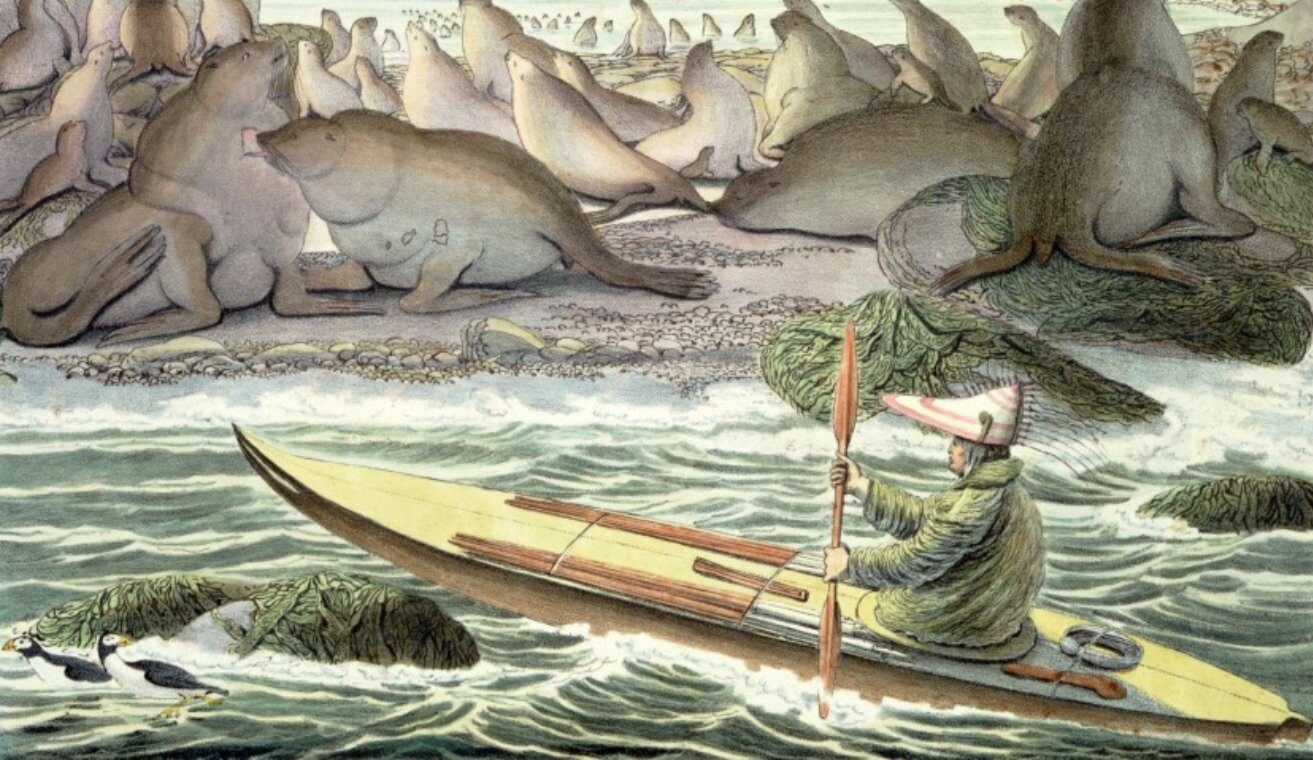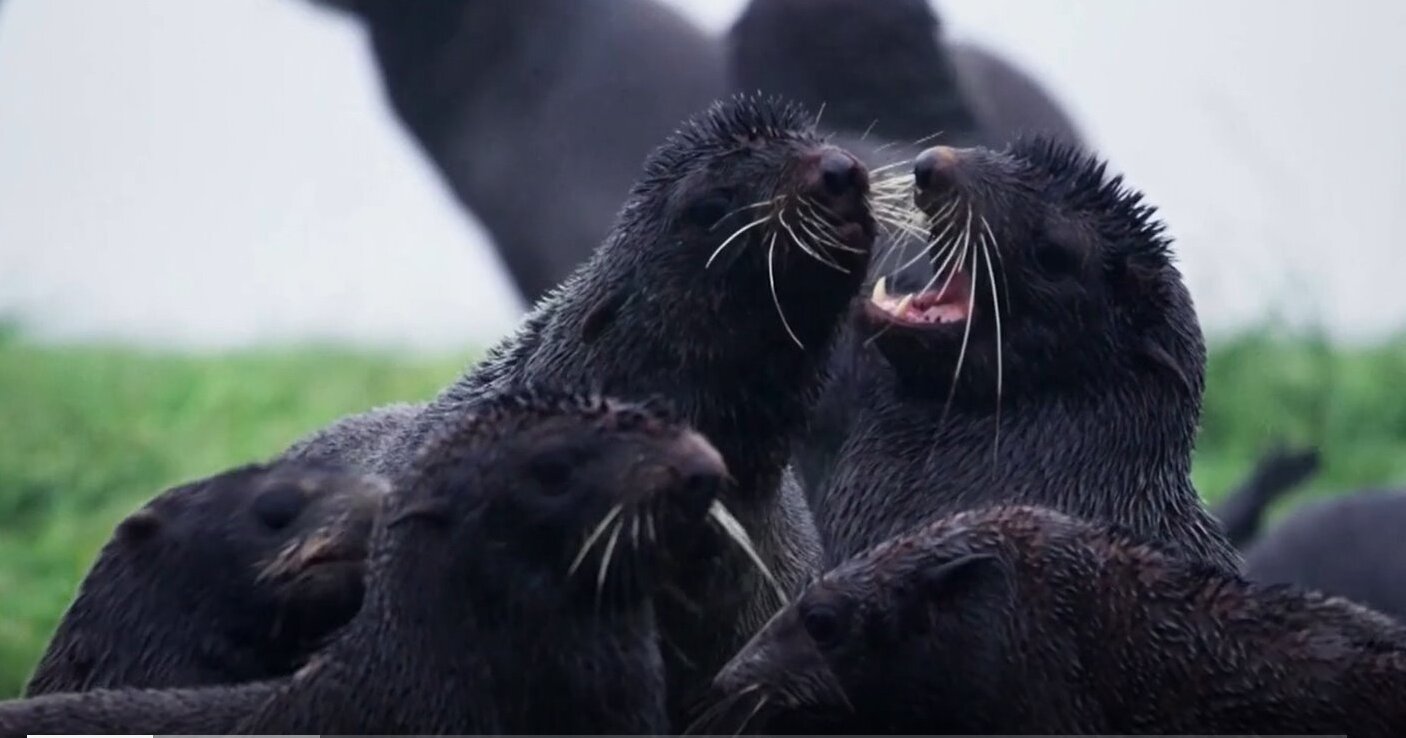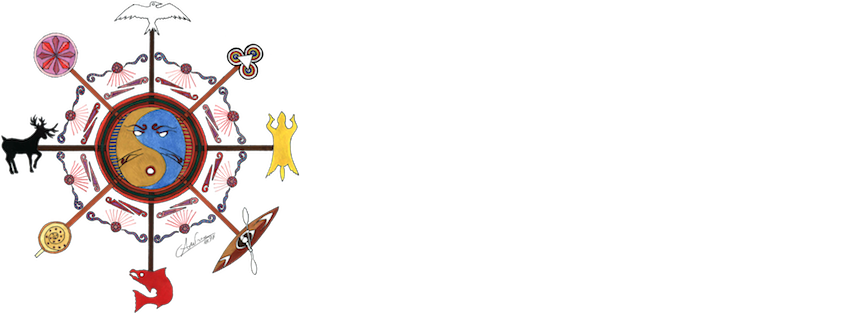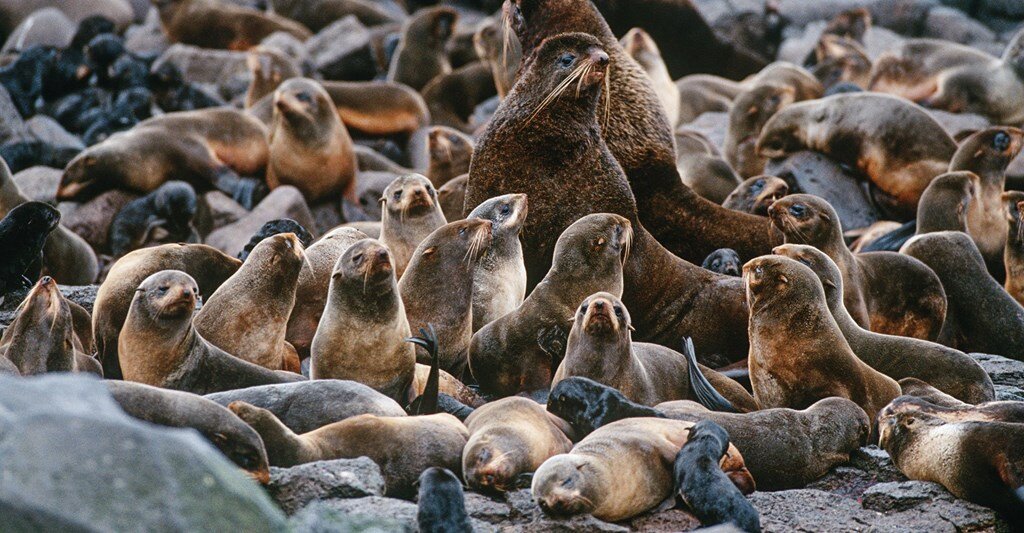
The Unangan People
The Indigenous Peoples of the Aleutian Archipelago & Pribilof Islands in the Bering Sea

Ilarion was born and raised on St. Paul Island of the Pribilof Islands in the middle of the Bering Sea, where he lived for half his life. He was among the last generation of Unangan (Unungan) or “Aleut” people raised in a traditional way. He now lives in Homer, Alaska.
In ancient times, the Unangan people only lived in the Aleutian chain, and not on what is now known as the Pribilof Islands, as they were sacred lands where animals came to procreate, and were not to be disturbed. When hunting seals and sea lions, the Unangan hunters never hunted during the mating season, and only hunted males that are not in their prime, and with utmost respect and blessing, using every part of the animal that has given its life for theirs to continue.
The Unangan people got weekly supply and mail by little ”Reeve Aleutian Airways” airplane. In 1961, the stewardess of the airplane agreed to smuggle a letter from the men of St. Paul telling the truth. She took it to Howard Rock, the head of Tundra Times—the only Native newspaper that existed in Alaska at the time. The letter was published there, and read by Williard Bowman—head of the U.S. Human Rights Committee—who decided to conduct an investigation on the island. He found what the men said to be true, and turned his findings in to Congress in 1964. Alaska Senator Bob Bartlett decided to conduct a congressional investigation, went to the Island, and collected testimony and evidence.
This resulted in the 1966 freedom bill for the Unangan people, that was ironically called “The Fur Seal Act of 1966”.
For generations their ancient ways were wiped out by their conquerors, and even after they gained their freedom, the fur industry remained their only trade. That instigated a system of economic dependence that nearly led to the collapse of the Unangnan. In the early 1980s, the government suddenly pulled out, due to pressure from animal rights movements, leaving the Unangan without any alternatives. But the Unangan people also survived this profound crisis initiated by the federal government’s decision to withdraw economic and other activities from the islands. Though initially a community-wide crisis, this was ultimately a spiritual, cultural, and economic turning point in all of their lives. The urgency of the situation prompted Unangnan leadership to take huge risks in their decision-making processes. They discarded conventional western economic and community planning approaches and devised their own… In time, the leaders remembered the wisdom of their ancestors who had always placed great importance on the process of reaching decisions. The “Wisdomkeepers” had understood that if the process was constructed with the proper spirit and intent, the whole or result would always be greater than the sum of its parts and would exceed all individual expectations. The wisdom of the Elders proved to be the correct approach to use during this crisis in the Pribilofs. Results far exceeded expectations as the focus shifted from goal to process.
In 1786 and 1787, the Russian fur traders transplanted Unangan people from the Aleutian archipelago to the Pribilofs to serve as a slave labor force to harvest fur seals by the mass. These Unangan became the survivors of a holocaust at the hands of their oppressors, who took 80% of their population within a 50-year period.
Their fate did not improve from there. Disease, poverty, an interrupted way of life—many barriers would continue to challenge the Unangnan people. Outside control did not end with the fur traders. After being “transferred” along with the land, from the hands of Russia to the USA, the U.S. government secretly kept them as slaves for the fur industry: They weren’t allowed off the Pribilofs; they lived on small food portions allocated by the government, and hardly any money. Any connection with the outside world was monitored, letters were censored—to make sure they didn’t tell anyone about their slavery, and any disobedient behavior meant suffering the consequences and punishment not only to the violator, but also that person’s whole family.

“Let it be known to all, after 196 years of valiant struggle, through periods of slavery, genocide, disease, abject poverty, and outside control; conditions which challenged the strongest of human spirits, the Unangnan dream of Unangnan control over Unangnan destiny became a reality October 28, 1983.”
— Ilarion Merculieff
More about restoring the community and healing the trauma
“Tanam Awaa: Our community’s Work” is a book produced by the Aleut Community of St. Paul. It was written by their judge - Judge Rabbi David Avraham Voluck, and published through their Tribal Justice department. This is a trauma-informed judicial bench book to help tribes provide trauma-informed and culturally-appropriate justice.
Nowadays, St. George Island, the sister Island of St. Paul, still suffers from the government pullout without any care the life - humans and not - in the area.
In 2018, city manager of St. George, Patrick Pletnikoff, came up with a plan that Ilarion ‘Kuuyux’ Merculieff thought up and helped orchestrate: a Bering Sea Project : Where nations, cultures, species and different ways of knowing can co-exist, complete instead of compete, for the benefit of all.
In the Bering Sea, between Russia and USA, in Alaska, lays a continental shelf where many species that depend on the Bering Sea for survival forage adjacent near St. George island, in the Pribilof Islands. All are dramatically and negatively affected by this climate crisis. What makes St. George unique is that a thermocline curtain exists around the Island that captures samples of what is happening in the entire Bering sea because the Bering Sea circulates in a counter clockwise gyre that captures everything in that curtain.
The project wishes to establish a marine sanctuary (the first marine sanctuary in Alaska) and marine scientific center that combines traditional ways of knowing and western science equally. Coupled with that: an alliance between Alaska Native peoples along the shores of the Bering Sea (approximately 65,000 people), that would issue a bi-annual Alaska Native Bering Sea report containing their observations and conclusions which could be then used as an archetype wherever people want to do that in other places on Earth.
Other Resources
See this article about the Unangan people on the Russian “side” of the Aleutians and how they still speak their mother tongue - the language of the land that connects people beyond borders.






